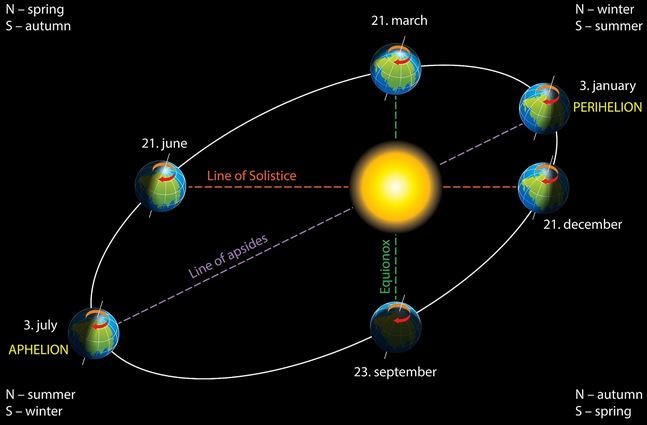Astronomical units (AU) are a fundamental concept in astronomy, providing a way to measure distances within our solar system and beyond. This unit of measurement, defined as the average distance between the Earth and the Sun, simplifies the vast distances in space into more manageable terms. Understanding astronomical units is essential for anyone interested in the science of astronomy, as it helps to grasp the scale and structure of our cosmic neighborhood.
What is an Astronomical Unit?
An astronomical unit is a standard unit of distance used by astronomers to describe distances within our solar system. One astronomical unit is approximately 149.6 million kilometers (about 93 million miles). This distance represents the average space between the Earth and the Sun as Earth orbits in its elliptical path.
The concept of the astronomical unit dates back to ancient times when early astronomers sought to measure the distance between Earth and other celestial bodies. However, it wasn’t until the 17th century that more accurate measurements became possible, leading to a more precise definition of the AU.
The Importance of Astronomical Units in Astronomy
The astronomical unit is crucial in astronomy because it provides a convenient way to express and compare distances between objects in the solar system. Given the immense scale of the universe, using kilometers or miles to measure distances between planets and stars would result in overwhelmingly large numbers. The AU simplifies these measurements, making it easier to understand and communicate the vast distances in space.
For example, the distance from Earth to Mars varies between 0.5 AU and 2.5 AU, depending on their positions in their respective orbits. The average distance from the Sun to Jupiter is about 5.2 AU, while Neptune, the farthest planet in our solar system, is about 30 AU from the Sun.

Historical Development of the Astronomical Unit
The concept of the astronomical unit has evolved over time. Early astronomers like Aristarchus of Samos and Hipparchus attempted to estimate the distance between Earth and the Sun using geometric methods, but their calculations were far from accurate due to the limitations of their observations.
It wasn’t until the 18th century that astronomers made significant progress in measuring the AU. The transits of Venus in 1761 and 1769 provided critical data that allowed for more accurate calculations. By observing Venus as it passed across the Sun’s disk from different locations on Earth, astronomers could apply the principles of parallax to estimate the distance between Earth and the Sun.
In the 20th century, with the advent of radar technology, scientists were able to bounce radar signals off of planets like Venus and calculate their distance from Earth with high precision. These measurements, combined with the laws of celestial mechanics, led to a more precise determination of the AU.
The Modern Definition of an Astronomical Unit
The astronomical unit was officially redefined in 2012 by the International Astronomical Union (IAU) to simplify its use in modern astronomy. Previously, the AU was defined based on the Earth’s orbit, which was subject to minor variations due to gravitational influences from other planets. The modern definition of an astronomical unit is exactly 149,597,870.7 kilometers, based on the speed of light and the Earth’s orbital parameters.
This redefinition ensures consistency and accuracy in astronomical calculations, making it easier for astronomers to use the AU in their work without the need for constant recalibration.
Applications of Astronomical Units
Astronomical units are used extensively in various areas of astronomy and space exploration:
- Planetary Distances: The AU is the standard unit for measuring the distances between planets in our solar system. It helps astronomers calculate the time it takes for spacecraft to travel between planets and plan space missions effectively.
- Stellar Distances: While the AU is primarily used for distances within the solar system, it also serves as a baseline for measuring distances to nearby stars. For example, the distance to the nearest star, Proxima Centauri, is about 268,000 AU, or roughly 4.24 light-years.
- Orbital Mechanics: The AU is used in calculating the orbits of planets, asteroids, and comets. It provides a consistent unit of measurement for determining the positions of these objects relative to the Sun and each other.
- Educational Tool: The AU is an essential educational tool, helping students and the general public understand the vast distances in space. By comparing the distances of different planets from the Sun in AU, it becomes easier to visualize the structure of the solar system.
Beyond the Astronomical Unit: Light-Years and Parsecs
While the astronomical unit is useful for measuring distances within the solar system, larger units like light-years and parsecs are used for interstellar and intergalactic distances.
- Light-Year: A light-year is the distance that light travels in one year, approximately 63,241 AU. It is commonly used to express the distance between stars and galaxies.
- Parsec: A parsec is equivalent to about 206,265 AU or 3.26 light-years. It is derived from the method of parallax and is widely used in professional astronomy to measure vast distances in space.
The astronomical unit is a fundamental concept in astronomy that allows us to grasp the immense distances within our solar system. By providing a standard unit of measurement, the AU simplifies the complexities of space, making it easier to explore, understand, and communicate the vastness of the cosmos. Whether used in calculating planetary distances, planning space missions, or educating the public, the astronomical unit remains an indispensable tool in the study of the universe.
